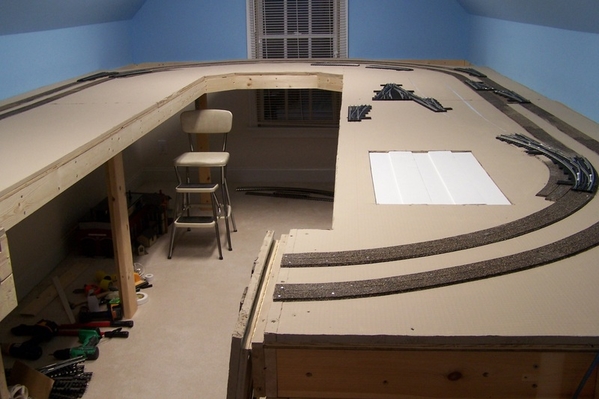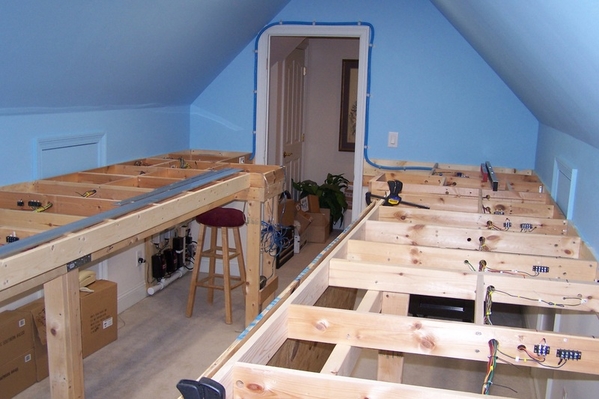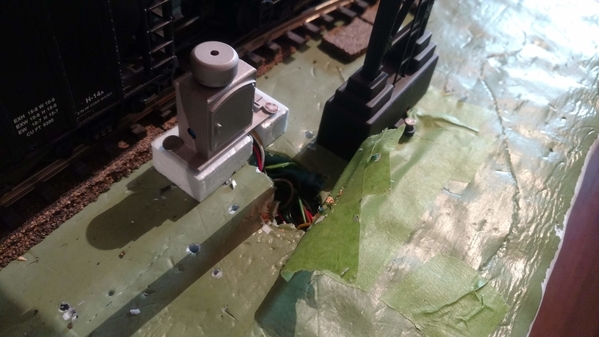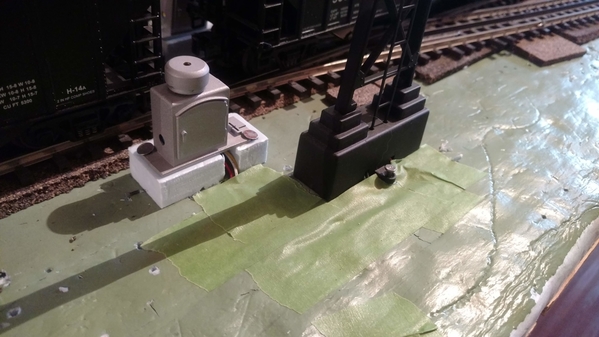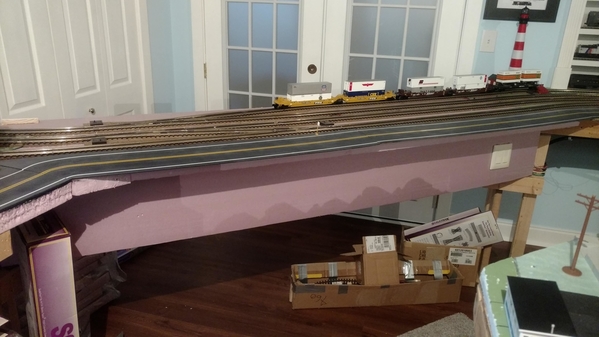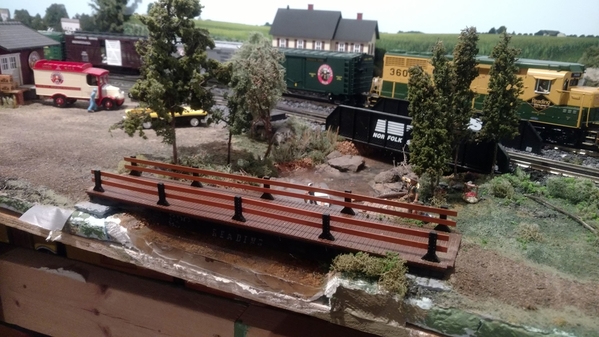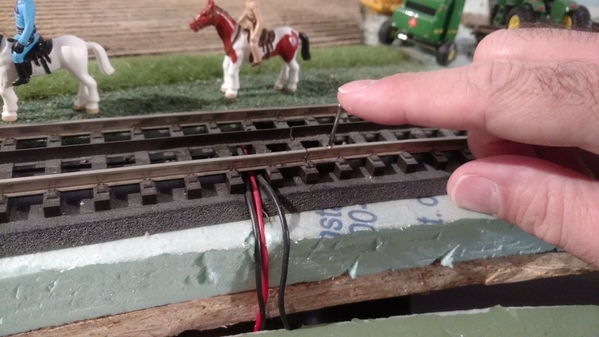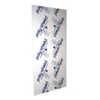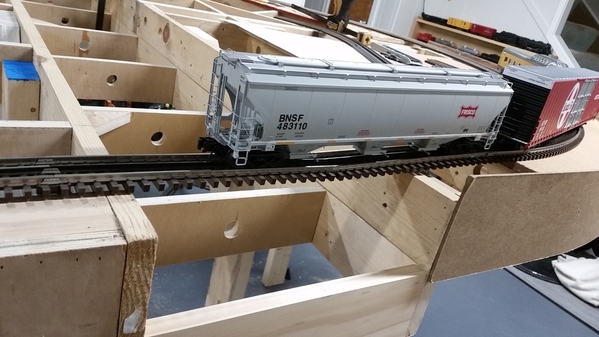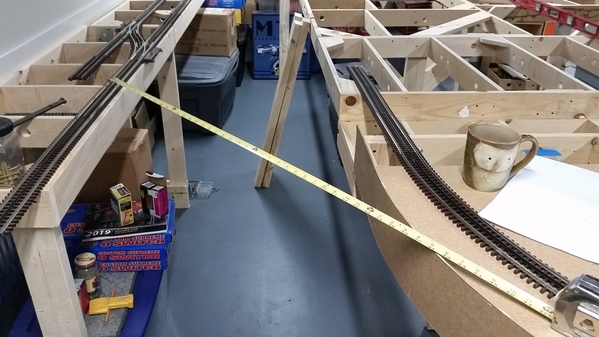Hello, I am saving to buy my own home,so in the meantime,I bought 3 6ftx3ft foldable tables from Costco.I then put down 3/4 inch plywood,then on top of that I put a layer of 4"inch construction insulation (basically foam) and I topped it off with the Mylar or"pegboard" without the holes drilled in. I cut about 6 support legs from nice 2x4's,to brace it up so I could walk on it,to reach some of my shelving.
I then just fastened my ALL ROSS track with the proper size blackned track screws,
The results are STUNNINGLY QUIET.
Even with the HUGE Premier MTH BEASTS running on it,you can turn the sounds off,and all you hear is the polite "Clickety Clack" of the engines&cars passng over the Joints in the sectional ROSS.I left the "NIBS" on the connectors this time,as in the next year or so,I will no doubt be tking the track apart to fit my hopefully "Final" layout,which is going to be MUCH bigger than the 11ftx 14 ft layout I am running on now.
But to answer your question,I found out by using this combination of materials and track,I did not need the mountain of cork roadbed I purchased through the years.I am gonna hang on to the cork roadbed,just in case I go with different materials on my final "MASTER" or "DREAM" layout in a year or so.But I think this is the case with most layouts.depending on your choice of track&building materials,you may/may not have to buy the roadbed. Inmy case here,the 4" insulation is providing a very nice cushioning for the trains.
I can run trains in the master bedroom in this Apt,close the door and my wife cannot hear them while she does her thing on the same floor,10 ft away from the layout room.And I'm running ALL premier Stuff,and even the massive weight of FEF's,Big Boy's, and other Heavy,big engines has been conquered by the combination of materials





